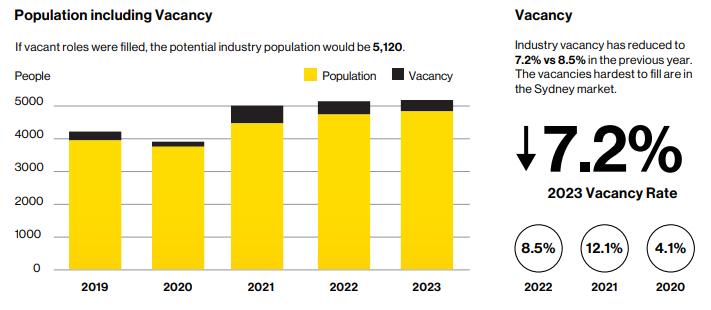Vacancies down in media agencies, but still above normal levels
Findings from the Media Federation of Australia’s (MFA) annual industry census have revealed that talent churn is continuing to trend downwards, with industry vacancy down to 7.2 per cent in 2023, compared to 8.5 per cent in the previous year.
The vacancy rate appears to be steadily approaching normative levels (6 per cent), after reaching 12.1 per cent in 2021. As of 2020, vacancies sat at only 4.1 per cent.


